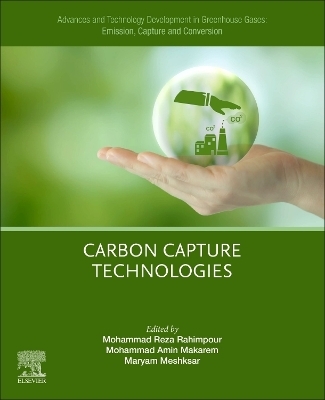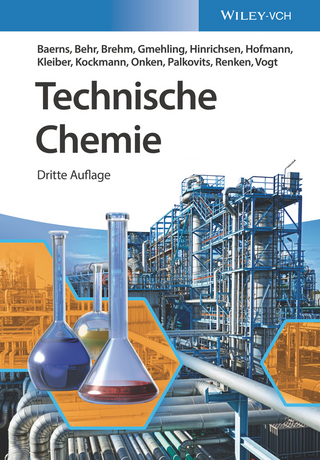
Advances and Technology Development in Greenhouse Gases: Emission, Capture and Conversion
Elsevier - Health Sciences Division (Verlag)
978-0-443-19233-3 (ISBN)
- Titel z.Zt. nicht lieferbar
- Versandkostenfrei innerhalb Deutschlands
- Auch auf Rechnung
- Verfügbarkeit in der Filiale vor Ort prüfen
- Artikel merken
Prof. Mohammad Reza Rahimpour is a professor in Chemical Engineering at Shiraz University, Iran. He received his Ph.D. in Chemical Engineering from Shiraz University joint with University of Sydney, Australia 1988. He started his independent career as Assistant Professor in September 1998 at Shiraz University. Prof. M.R. Rahimpour, was a Research Associate at University of California, Davis from 2012 till 2017. During his stay in University of California, he developed different reaction networks and catalytic processes such as thermal and plasma reactors for upgrading of lignin bio-oil to biofuel with collaboration of UCDAVIS. He has been a Chair of Department of Chemical Engineering at Shiraz University from 2005 till 2009 and from 2015 till 2020. Prof. M.R. Rahimpour leads a research group in fuel processing technology focused on the catalytic conversion of fossil fuels such as natural gas, and renewable fuels such as bio-oils derived from lignin to valuable energy sources. He provides young distinguished scholars with perfect educational opportunities in both experimental methods and theoretical tools in developing countries to investigate in-depth research in the various field of chemical engineering including carbon capture, chemical looping, membrane separation, storage and utilization technologies, novel technologies for natural gas conversion and improving the energy efficiency in the production and use of natural gas industries. Dr. Mohammad Amin Makarem is a research associate at Shiraz University. His research interests are gas separation and purification, nanofluids, microfluidics, catalyst synthesis, reactor design, and green energy. In gas separation, his focus is on experimental and theoretical investigation and optimization of pressure swing adsorption process, and in the gas purification field, he is working on novel technologies such as microchannels. Recently, he has investigated methods of synthesizing biotemplate nanomaterials and catalysts. Besides, he has collaborated in writing and editing various books and book chapters for famous publishers such as Elsevier, Springer, and Wiley. Maryam Meshksar is a research associate at Shiraz University. Her research has focused on gas separation, clean energy, and catalyst synthesis. In gas separation, she is working on membrane separation process, and in the clean energy field, she has worked on different reforming-based processes for syngas production from methane experimentally. She has also synthesized novel catalysts for these processes which are tested in for the first time. Besides, she has reviewed novel technologies like microchannels for energy production. Recently, she has written various book-chapters for famous publishers such as Elsevier, Springer, and Wiley.
Section I: Carbon Capture Concepts 1. Introduction to carbon capture methods and technologies 2. Energy penalties of CO2 capture technologies 3. The largest operating pilots and plants for carbon capture Section II: Absorption Techniques for Carbon Capture 4. Application of amines for carbon capture 5. Physical and hybrid solvents for carbon capture: ethers, ammonia, methanol, etc. 6. Carbon capture using alkaline solvents: carbonates and hydroxides 7. Ionic liquids and deep eutectic solvents for carbon capture 8. Carbon capture by solvents modified with nanoparticles 9. Carbon capture by encapsulated liquid sorbents 10. Novel gas-liquid contactors for carbon capture: Mini- and micro-channels, and rotating packed beds 11. Cryogenic-fractionation for carbon capture 12. Enzymatic carbon capture 13. Economic assessments and environmental challenges of carbon capture using absorption techniques Section III: Adsorption Techniques for Carbon Capture 14. Swing technologies for carbon capture: pressure, thermal, vacuum, electrical and mixed swing processes 15. Carbon capture by carbonaceous sorbents 16. Nitrogen containing carbon materials for carbon capture 17. Metal oxides and porous-based sorbents for carbon capture: MOFs, MCMs, SBAs, Zeolites, etc. 18. CO2 adsorption over photocatalysts 19. Alkaline adsorbents for carbon capture 20. Polymeric materials for carbon capture 21. CO2 capture using algae 22. CO2 capture by soil 23. Economic assessments and environmental challenges of carbon capture using adsorption techniques Section IV: Membrane Technology for Carbon Capture 24. Hollow-fiber membranes for carbon capture and separation 25. Carbon capture and separation by polymeric membranes for 26. Carbon capture and separation by ionic liquid membranes 27. MOF mixed matrix membranes for carbon capture and separation 28. Dense metal membranes for carbon capture and separation 29. Application of electrochemical membranes for carbon capture and separation 30. Economic assessments and environmental challenges of carbon capture using membrane techniques Section V: Other Technologies for Carbon Capture 31. Oxy-fuel combustion as a carbon capture technique 32. Recent advances and new concepts of carbon capture
| Erscheinungsdatum | 22.08.2024 |
|---|---|
| Verlagsort | Philadelphia |
| Sprache | englisch |
| Maße | 191 x 235 mm |
| Gewicht | 450 g |
| Themenwelt | Naturwissenschaften ► Chemie ► Technische Chemie |
| Technik ► Elektrotechnik / Energietechnik | |
| Technik ► Umwelttechnik / Biotechnologie | |
| ISBN-10 | 0-443-19233-2 / 0443192332 |
| ISBN-13 | 978-0-443-19233-3 / 9780443192333 |
| Zustand | Neuware |
| Informationen gemäß Produktsicherheitsverordnung (GPSR) | |
| Haben Sie eine Frage zum Produkt? |
aus dem Bereich


